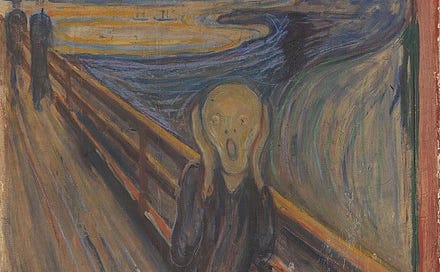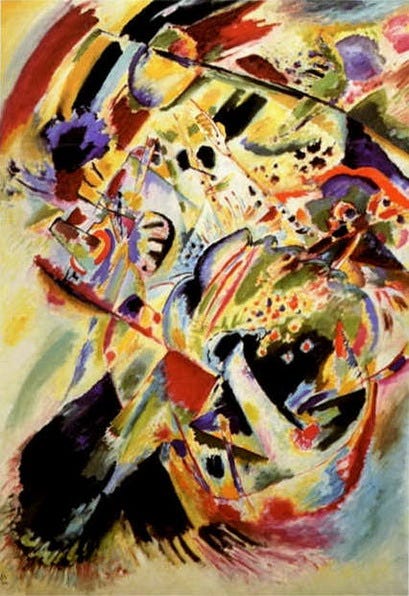Expressionism is often explained through the horrors of World War I—how it captured the shattered emotions of a world left in ruins. But let’s change the perspective, because love does that just fine—it drags you through every kind of feeling, too intense to keep bottled up. Expressionism doesn’t flirt; it lays everything bare and gets straight to the point.
If Impressionism was a gentle kiss on the neck, Expressionism was a confession of heartbreak at 3 AM. It doesn’t seduce you with soft brushstrokes and delicate beauty. No, it grabs you by the collar, pulls you in close, and makes you feel—whether you want to or not. It’s so overwhelming you want to scream. And no one put that scream on canvas better than Edvard Munch, who had a formative influence on this art movement.
His The Scream isn’t just a painting; it’s pure, unfiltered emotional chaos. That ghostly figure clutching its face? That’s you, the moment love turns from poetry to panic. When passion spirals into obsession. When you realize that love isn’t just candlelit dinners—it’s also longing, desperation, and raw intensity.
Wassily Kandinsky understood those emotions. He believed colors and forms weren’t just visual—they pulsed and vibrated, like soundwaves hitting the soul. His paintings don’t whisper sweet nothings; they are the relentless rhythm of a heartbeat.
Expressionism was never subtle. If it were a love letter, it would be written in the middle of the night, unfiltered and desperate. If it were a goodbye, it would be shouted in the pouring rain. If it were a kiss, it would leave you dizzy, breathless, undone.
Next time you stand in front of an Expressionist painting, don’t just look at it. Feel it. FEEL IT.
Art needs more eyes — and so does this blog.
It’s free to read, but only grows if it travels.
Liked it even a bit? Tap the heart.
A line stuck with you? Drop it in a comment.
Smiled once? Hit restack.
Want to keep this writing alive? Send it to a curious friend to subscribe.





